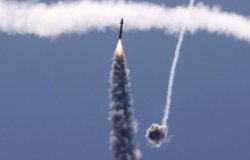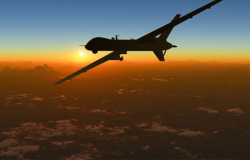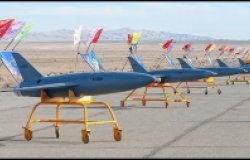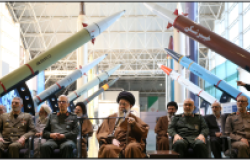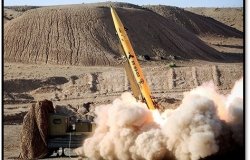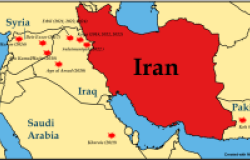Russia and Ukraine on the Brink: A Discussion with Michèle Flournoy
Overview
As Russia continues to amass troops on its border with Ukraine, the United States and NATO are considering its options to deter a possible conflict. The Wilson Center hosted a conversation with Former Under Secretary of Defense for Policy Michèle Flournoy examining the details of the situation on the ground in Ukraine, the prospects of deterrence, and the impact this crisis will have on America's security interests.
Key Takeaways
- Russian forces in Eastern Ukraine, Belarus, and naval forces in the Black Sea signal that we are on the brink of war in Europe. Special operations and airborne units are also on the table. The chance for a diplomatic breakthrough and de-escalation of the crisis is becoming increasingly remote.
- The Biden Administration decided as a matter of policy to share information proactively, such as intelligence indicating the potential for a Russia “false flag” operation, to lessen the impact of Russian disinformation and manufactured provocations. The U.S. is also focusing on reinforcing unity between coalition forces and European allies to ensure a unified approach to diplomacy and potential sanctions.
- “Real success” in this scenario translates to convincing Putin upfront that he can’t succeed, or the cost of an invasion is too high. If Russia does invade Ukraine, a successful outcome would mean preventing the Kremlin from bringing Ukraine permanently into the Russia orbit by forcing the withdrawal of Russian forces and the restoring a democratically elected government in Ukraine.
Selected Quotes
What Can We Expect to See if Putin Invades Ukraine?
“I think it’s really important for us to think of these in sort of different time frames. I mean in the short-term, if Russia comes in with its full military might, Ukraine will not be able to stop them. So, they will be able to have some tactical victories and they will be able to potentially put Kyiv under siege and put huge pressure on the government, and maybe even topple the government.
But that’s not the end of it, that’s the beginning. Now they’re in there and you have to think of it as a longer game. First of all, even if just ten percent of the Ukrainian population decides to fight this, that will be a heck of an insurgency. And you can be sure that Western powers, at least some number of them, will be supporting that insurgency as much as possible. You will have massive sanctions put in place: energy, financial, travel, export controls—maybe even things like sanctioning the insurance industry, so Russian ships, Russian transport—hampering their trade, that would not be able to proceed as normal.
So, there will be a very heavy economic burden and there will be a complete diplomatic isolation. You can expect NATO to meet, the EU to meet, Putin to be unwelcome anywhere in the world—except maybe meeting with Xi in Beijing. So, this is the longer game. You know, if you end up with Putin versus the West, it’s not going to be a pretty picture and it’s not a winning game for him. I hope that we don’t have to go through those early days and see this invasion play out in Ukraine, but I don’t think Putin is going to ultimately achieve his objectives, because I think we will stand as a transatlantic community, and more broadly, our allies around the world don’t want to see Putin succeed. No one wants to see, in the 21st century, an authoritarian government, be able to overthrow a sovereign power, however an imperfect democracy—but a democracy—and succeed.”
What Does a Successful Avenue Out of the Russia-Ukraine Crises Look Like for the U.S. and NATO?
“I mean real success would be convincing Putin up front that he can’t succeed or that the cost is too high, and so, that we find a way to deescalate the situation and negotiate… you know, something with him. But I think that’s, again, I think increasingly unlikely, and I think success, if he goes in, is to prevent him from sort of bringing Ukraine permanently into the Russian orbit. And to ultimately… forcing the withdrawal of his troops as the scenario plays out and the restoration of a Ukrainian government that is chosen by the Ukrainian people, and so forth.
I do think there’s lots of lessons we can learn, even now, from the crisis as it’s unfolded—we need to work harder on reducing Europe’s energy dependence on Russia. We need to work harder on cyber resilience—ours and those of other countries that we’re partnered with. We need to think about other means of deterrence, beyond simply sending in our own conventional military forces, which President Biden has taken off the table. And we need to be thinking hard about how do we avoid miscalculation? Something we haven’t talked about, if this goes forward, you’re going to have Russian forces and NATO forces right up against each other. I don’t think NATO forces are planning to go in but imagine a Russian incursion into the Baltic airspace or something that happens in the Black Sea… or what have you. There’s room for accidents, room for miscalculations, and we have to be very careful that anything like that leads to escalation.”
This event is part of the Wilson Center's Hindsight Up Front | Ukraine initiative.

Wilson Center
Hosted By

Kennan Institute
The Kennan Institute is the premier US center for advanced research on Russia and Eurasia and the oldest and largest regional program at the Woodrow Wilson International Center for Scholars. The Kennan Institute is committed to improving American understanding of Russia, Ukraine, Central Asia, the Caucasus, and the surrounding region though research and exchange. Read more
Thank you for your interest in this event. Please send any feedback or questions to our Events staff.



